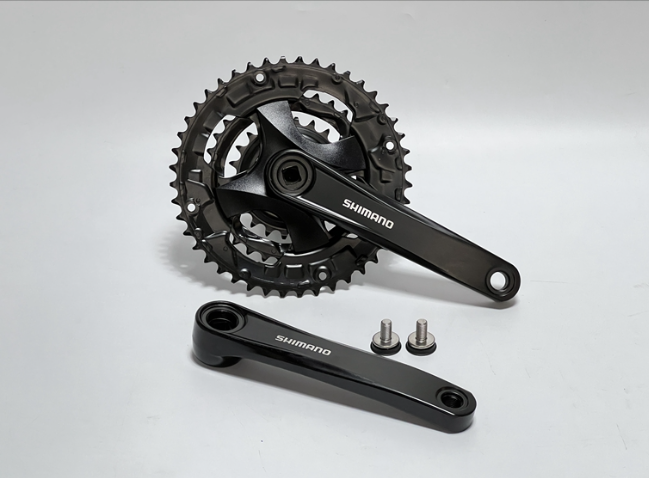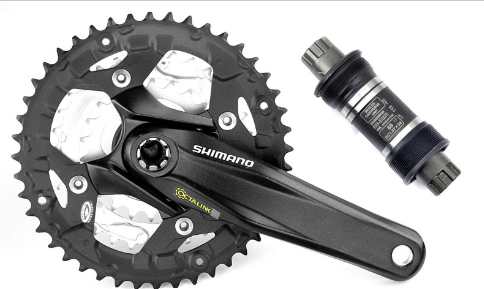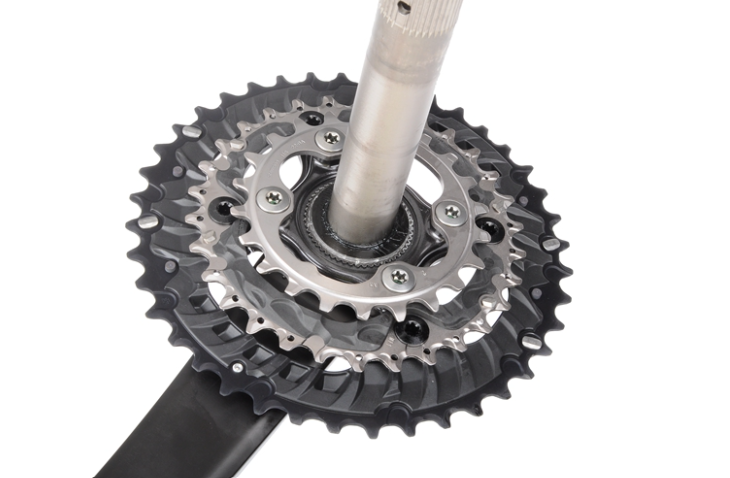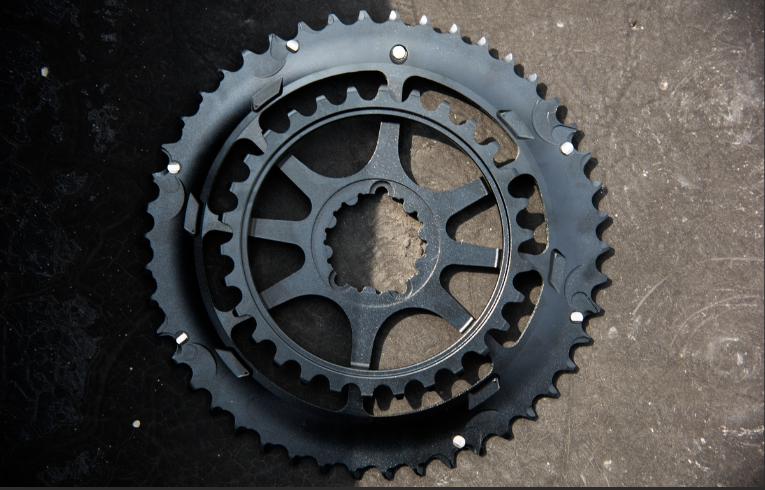The bicycle chainring is one of the most essential bike parts of the transmission system. For cyclists with some cycling experience, using different types of chainring brings very different experiences. Currently, chainrings are divided into three main categories: chainring for square tapper, chainring for splined bottom bracket, and chainring for integrated crankset, according to their connection mode with the bottom bracket/spindle.
1. Chainring for square tapper
chainring for the square tapper should be used with square tapper bottom brackets. For mountain bike owners, the chainring for square tapper is currently the most commonly used and cheapest. It is low-cost, easy to install and replace, more importantly, cheap. It significantly reduced the cost of use, and its extensive use was also due to the limited development level of the manufacturing industry. So far, chainring for square tappers is still used in a relatively large range.

Chainring for the square tapper uses the square hole in the center of it to join with the spindle in the square tapper. Its advantages are that it is easy to dismantle, and the tools used during the disassembly are simple, so its application makes maintenance very convenient. The disadvantage of chainring for square tappers is its low intensity. The loosening of the screw can easily lead to direct damage to the chainring. So, the chainring for square tappers is usually used for low-end or entry-level bikes. SUMLON believe that shortly, the chainring for square tapper will be gradually eliminated in the professional level bicycle product series.
2. Chainring for splined bottom bracket
The chainring for the splined bottom brackets can only be used within the exact specification and model. It is usually suitable for entry-level professional bikes.

We have high connection strength when the splined bottom bracket chainring is applied. The instantaneous large explosive force does not cause chainring to produce a large deformation. It allows cyclists to feel the improvement in power transmission efficiency. All splined bottom brackets use sealed bearings to keep bottom brackets free from rain interference and maximize their due function. Splined bottom bracket Performance is more stable and wear-resistant and t, and the failure is zero.
Chainring for splined bottom bracket The conduction efficiency of the highest mechanical connection mode. Most of the Chainring for integrated cranksets use the same link with the axis, but the spindle is pre-integrated in the chainring. Therefore, the performance of chainring for splined bottom brackets in force conduction is very close to that of chainring for integrated cranksets, but the weight will be slightly heavier. In short, the chainring for the splined bottom bracket is somewhere between the square tapper chainring and the ring for the integrated crankset in performance. So, he is a little more expensive than the chainring for a square tapper, which is the mainstream entry-level, professional model with a tooth plate.
3. Chainring for integrated crankset :
This is a professional chainring. Usually, costly bikes use the chainring for integrated cranksets. The spindle and chainring are pre-connected, and the spindle is hollow. This allows the whole system to strengthen the rigidity of the hollow crank while further reducing the weight. In the traditional case where the hollow crank is applied, the curved crank is empty inside, which reduces some weight. Then, the crank distorts slightly when the crank is trampled. Of course, this deformation is very subtle. Riders with some cycling experience can feel this feature. Chainring for integrated cranksets Has many advantages: high strength and small deformation. The disadvantage is that it is more expensive.

By the way, SUMLON has been manufacturing bicycle parts for over 15 years. Contact us if you are looking for a bike parts factory or a one-stop wholesaler. Peace




